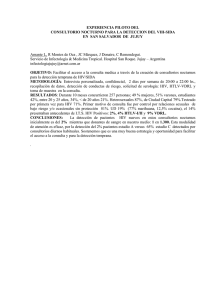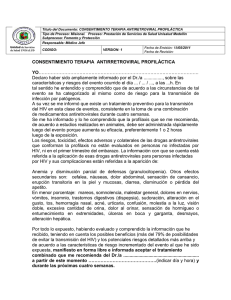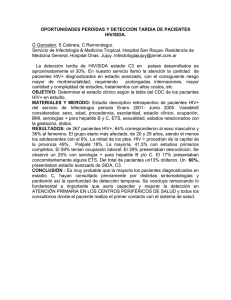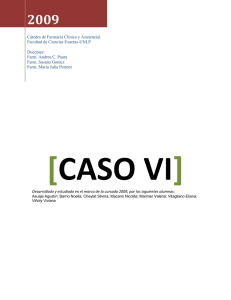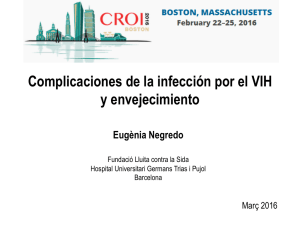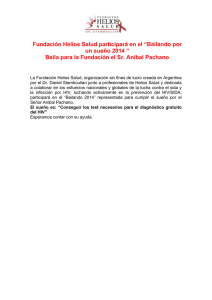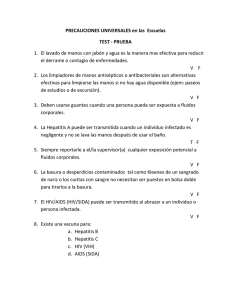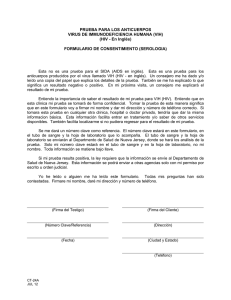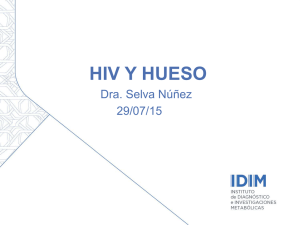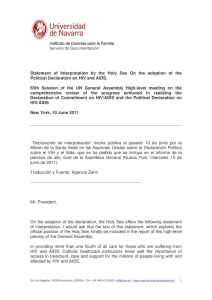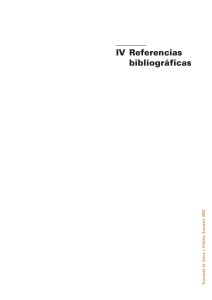Descargar un resumen rápido de referencias
Anuncio
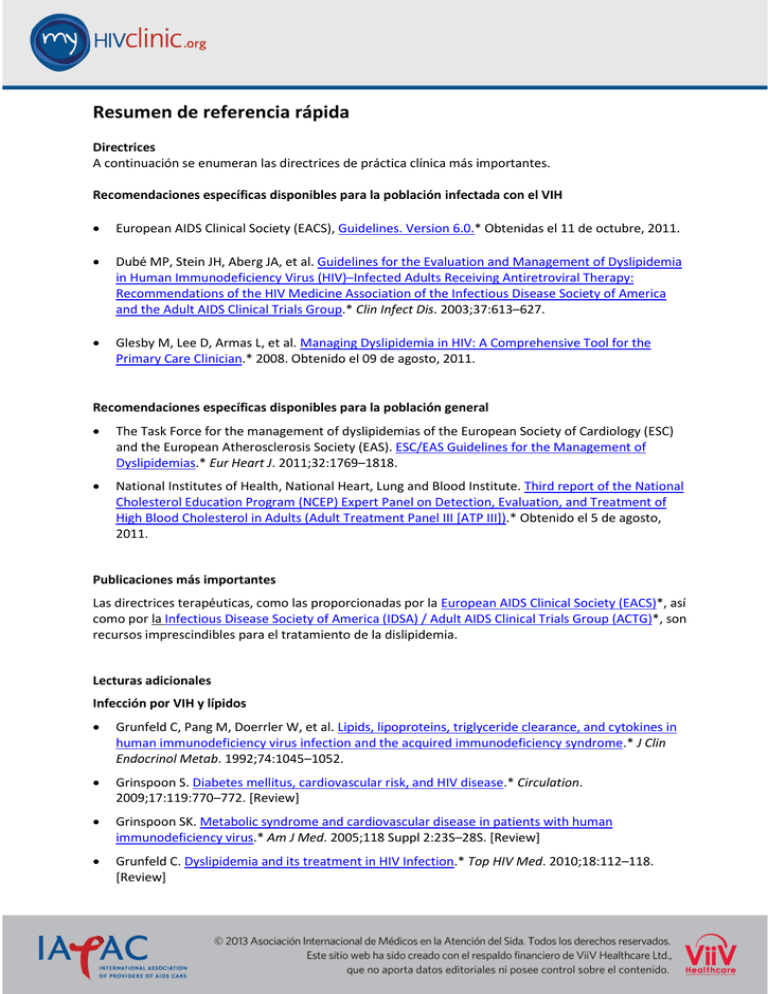
Resumen de referencia rápida Directrices A continuación se enumeran las directrices de práctica clínica más importantes. Recomendaciones específicas disponibles para la población infectada con el VIH European AIDS Clinical Society (EACS), Guidelines. Version 6.0.* Obtenidas el 11 de octubre, 2011. Dubé MP, Stein JH, Aberg JA, et al. Guidelines for the Evaluation and Management of Dyslipidemia in Human Immunodeficiency Virus (HIV)–Infected Adults Receiving Antiretroviral Therapy: Recommendations of the HIV Medicine Association of the Infectious Disease Society of America and the Adult AIDS Clinical Trials Group.* Clin Infect Dis. 2003;37:613–627. Glesby M, Lee D, Armas L, et al. Managing Dyslipidemia in HIV: A Comprehensive Tool for the Primary Care Clinician.* 2008. Obtenido el 09 de agosto, 2011. Recomendaciones específicas disponibles para la población general The Task Force for the management of dyslipidemias of the European Society of Cardiology (ESC) and the European Atherosclerosis Society (EAS). ESC/EAS Guidelines for the Management of Dyslipidemias.* Eur Heart J. 2011;32:1769–1818. National Institutes of Health, National Heart, Lung and Blood Institute. Third report of the National Cholesterol Education Program (NCEP) Expert Panel on Detection, Evaluation, and Treatment of High Blood Cholesterol in Adults (Adult Treatment Panel III [ATP III]).* Obtenido el 5 de agosto, 2011. Publicaciones más importantes Las directrices terapéuticas, como las proporcionadas por la European AIDS Clinical Society (EACS)*, así como por la Infectious Disease Society of America (IDSA) / Adult AIDS Clinical Trials Group (ACTG)*, son recursos imprescindibles para el tratamiento de la dislipidemia. Lecturas adicionales Infección por VIH y lípidos Grunfeld C, Pang M, Doerrler W, et al. Lipids, lipoproteins, triglyceride clearance, and cytokines in human immunodeficiency virus infection and the acquired immunodeficiency syndrome.* J Clin Endocrinol Metab. 1992;74:1045–1052. Grinspoon S. Diabetes mellitus, cardiovascular risk, and HIV disease.* Circulation. 2009;17:119:770–772. [Review] Grinspoon SK. Metabolic syndrome and cardiovascular disease in patients with human immunodeficiency virus.* Am J Med. 2005;118 Suppl 2:23S–28S. [Review] Grunfeld C. Dyslipidemia and its treatment in HIV Infection.* Top HIV Med. 2010;18:112–118. [Review] Tarr PE, Rotger M, Telenti A. Dyslipidemia in HIV-infected individuals: from pharmacogenetics to pharmacogenomics.* Pharmacogenomics. 2010;11:587–594. [Review] Tratamiento antirretroviral y lípidos Fontas E, van Leth F, Sabin CA, et al. Lipid profiles in HIV-infected patients receiving combination antiretroviral therapy: are different antiretroviral drugs associated with different lipid profiles?* J Infect Dis. 2004;189:1056–1074. Mulligan K, Grunfeld C, Tai VW, et al. Hyperlipidemia and insulin resistance are induced by protease inhibitors independent of changes in body composition in patients with HIV infection.* J Acquir Immune Defic Syndr. 2000;23:35–43. Nery MW, Martelli CM, Turchi MD. Dyslipidemia in AIDS patients on highly active antiretroviral therapy.* Braz J Infect Dis. 2011;15:151–155. Périard D, Telenti A, Sudre P, et al. Atherogenic dyslipidemia in HIV-infected individuals treated with protease inhibitors.* The Swiss HIV Cohort Study. Circulation. 1999;100:700–705. Riddler SA, Smit E, Cole SR, et al. Impact of HIV infection and HAART on serum lipids in men.* JAMA. 2003;289:2978–2982. Feeney ER and Mallon PW. HIV and HAART-associated dyslipidemia.* Open Cardiovasc Med J. 2011;5:49–63. [Review] Tungsiripat M, Aberg JA. Dyslipidemia in HIV patients.* Cleve Clin J Med. 2005;72:1113–1120. [Review]
